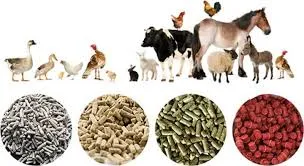
Nov . 15, 2024 21:03 Back to list
avermectin b1 factory
Avermectin B1 An Overview of Its Production and Use
Avermectin B1 is an important macrocyclic lactone that plays a crucial role in agriculture and medicine. Derived from the fermentation of the soil bacterium Streptomyces avermitilis, avermectins have gained immense popularity due to their potent insecticidal, acaricidal, and antiparasitic properties. This article delves into the production processes of avermectin B1 in factories, its applications, and the implications of its use in various fields.
Production Process
The manufacturing of avermectin B1 begins with the cultivation of Streptomyces avermitilis in a controlled fermentation environment. This bacterium produces avermectin, which exists as a mixture of closely related compounds. Avermectin B1 is one of the predominant components derived from this fermentation process. The fermentation medium typically consists of various carbohydrates, nitrogen sources, and mineral salts, carefully balanced to optimize the production of avermectins.
The fermentation process usually spans several days, during which the bacteria grow and produce avermectin through a series of biosynthetic pathways. Once the fermentation is complete, the broth containing the avermectin must be processed for extraction. This process often involves filtration to remove microbial biomass, followed by extraction using organic solvents. The extracted compounds are then purified through various techniques, such as chromatography, to isolate avermectin B1.
Formulation and Distribution
After purification, the avermectin B1 can be formulated into various products suitable for agricultural and pharmaceutical applications. In the agriculture sector, it is commonly formulated as emulsifiable concentrates, wettable powders, and granules. These formulations are designed to enhance the stability and efficacy of the active ingredient while ensuring ease of use for farmers and agricultural specialists.
Distribution of avermectin B1 takes place globally, as demand for effective pest control measures continues to rise. The ability of producers to manufacture high-quality avermectin B1 at scale has made it a staple in the agricultural industry, especially for controlling nematodes, mites, and certain insect pests.
avermectin b1 factory

Applications
1. Agricultural Use Avermectin B1 is widely utilized in crop protection products. It is particularly effective against a broad spectrum of pests, including whiteflies, leaf miners, and spider mites. Its mode of action involves binding to specific chloride channels in the nervous systems of these pests, causing paralysis and eventual death. This selectivity towards invertebrates makes avermectin B1 a vital tool in integrated pest management (IPM) strategies.
2. Veterinary Medicine In veterinary practices, avermectin B1 is used to treat various parasitic infections in livestock and pets. It is effective against internal parasites like roundworms and external parasites such as fleas and ticks. The application of avermectin B1 in veterinary medicine is essential for ensuring the health and productivity of animals, especially in livestock farming.
3. Human Medicine Although its primary uses are in agriculture and veterinary medicine, some derivatives of avermectin, such as ivermectin, derived from avermectin B1, have been utilized in human medicine. Ivermectin is renowned for its efficacy in treating parasitic infections, including lymphatic filariasis and river blindness (onchocerciasis). This highlights the potential of avermectin compounds in addressing global health challenges.
Environmental Considerations
Despite its numerous benefits, the use of avermectin B1 raises environmental concerns. Its application can lead to the development of resistance in pest populations, necessitating careful management and rotation with other pest control methods. Moreover, potential runoff from agricultural fields into water bodies can affect non-target organisms, including beneficial insects and aquatic life. Therefore, sustainable practices are essential in the use of avermectin B1, ensuring that its benefits do not come at the cost of ecological balance.
Conclusion
Avermectin B1 stands out as a crucial compound in both agriculture and medicine. Its production from the bacterium Streptomyces avermitilis in factories involves sophisticated fermentation and purification processes. While its applications are vast and beneficial, they come with responsibilities to mitigate environmental impacts and promote sustainability. With ongoing research and innovation, avermectin B1 continues to hold promise for future advancements in pest control and parasitic disease management.
-
Top Hemoglobinuria Manufacturer & Supplier Reliable Hemoglobinuria Factory Solutions
NewsJun.24,2025
-
Premium Honeysuckle Products - Leading Honeysuckle Manufacturer & Supplier Factory
NewsJun.10,2025
-
Pulmonary Edema Solutions from Leading Manufacturer & Supplier Reliable Factory Price
NewsJun.10,2025
-
Red Eyes - Leading Red Eyes Manufacturer & Supplier, Premium Quality Factory Price
NewsJun.10,2025
-
Broiler Ascites Syndrome Solutions Top Manufacturers
NewsJun.10,2025
-
Premium Amoxicillin Suppliers Reliable Biomox Mexican Factories
NewsJun.10,2025




